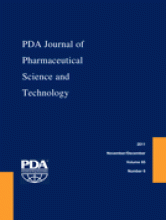Abstract
CONFERENCE PROCEEDING Proceedings of the PDA/FDA Adventitious Viruses in Biologics: Detection and Mitigation Strategies Workshop in Bethesda, MD, USA; December 1–3, 2010
Guest Editors: Arifa Khan (Bethesda, MD), Patricia Hughes (Bethesda, MD) and Michael Wiebe (San Francisco, CA)
Approaches to viral safety issues for biological products have evolved during the past 50+ years. The first cell culture products (viral vaccines) relied largely on the use of in vitro and in vivo virus screening assays that were based upon infectivity of adventitious viral agents. The use of Cohn fractionation and pasteurization by manufacturers of plasma derivatives introduced the concepts that purification and treatment with physical and chemical agents could greatly reduce the risk of viral contamination of human albumin and immunoglobulin products. But the limitations of such approaches became clear for thermolabile products that were removed early in fractionation such as antihemophilic factors, which transmitted hepatitis viruses and HIV-1 to some product recipients. These successes and limitations were taken into account by the early developers of recombinant DNA (rDNA)-derived cell culture products and by regulatory agencies, leading to the utilization of cloning technology to reduce/eliminate contamination due to human viruses and purification technologies to physically remove and inactivate adventitious and endogenous viruses, along with cell banking and cell bank characterization for adventitious and endogenous viruses, viral screening of biological raw materials, and testing of cell culture harvests, to ensure virus safety. Later development and incorporation of nanofiltration technology in the manufacturing process provided additional assurance of viral clearance for safety of biotechnology products. These measures have proven very effective at preventing iatrogenic infection of recipients of biotechnology products; however, viral contamination of production cell cultures has occasionally occurred. Screening tests for viral contamination in raw materials have not proven practical by themselves to prevent contamination of cell cultures, but they can be made more effective by coupling with treatment using physical or chemical agents to further reduce the hypothetical viral loads present in cell culture raw materials. Recent advances in polymerase chain reaction (PCR) technology have allowed preharvest testing for specific viral agents to reduce the risk of cell culture contamination by specific viruses in the harvest material. Examples of each of these stages in the evolution of virus detection methods are described and assessed in this paper.
- Viral safety
- In vivo virus screening
- In vitro virus screening
- Adventitious viral agents
- Viral clearance
- Viral inactivation
- PCR testing
- Biological products
- © PDA, Inc. 2011
PDA members receive access to all articles published in the current year and previous volume year. Institutional subscribers received access to all content. Log in below to receive access to this article if you are either of these.
If you are neither or you are a PDA member trying to access an article outside of your membership license, then you must purchase access to this article (below). If you do not have a username or password for JPST, you will be required to create an account prior to purchasing.
Full issue PDFs are for PDA members only.
Note to pda.org users
The PDA and PDA bookstore websites (www.pda.org and www.pda.org/bookstore) are separate websites from the PDA JPST website. When you first join PDA, your initial UserID and Password are sent to HighWirePress to create your PDA JPST account. Subsequent UserrID and Password changes required at the PDA websites will not pass on to PDA JPST and vice versa. If you forget your PDA JPST UserID and/or Password, you can request help to retrieve UserID and reset Password below.






